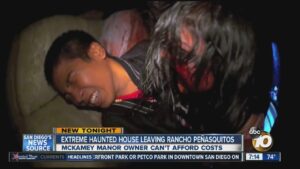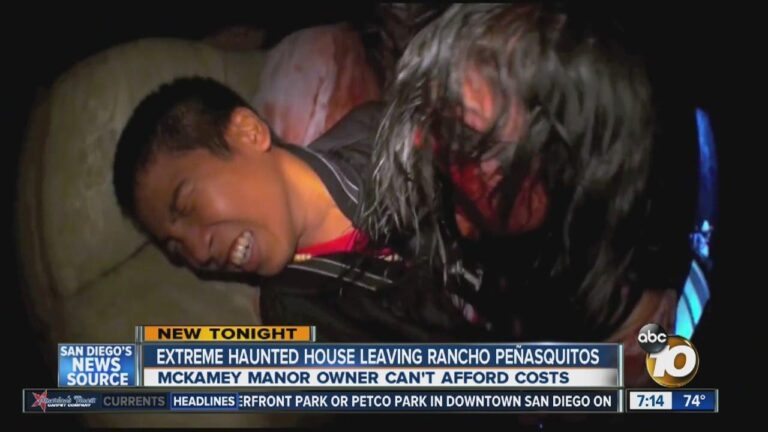Nestled in the quiet outskirts of Tennessee, McKamey Manor has earned a notorious reputation as America’s most extreme haunted house. Since its inception, the attraction has pushed the boundaries of fear and endurance, drawing thrill-seekers from across the country eager to test their limits. However, McKamey Manor’s rise to infamy has not been without controversy. Allegations of extreme methods and intense psychological challenges have sparked heated debates about ethics and safety in the haunted attraction industry. This article explores the history, operation, and ongoing controversies surrounding McKamey Manor, shedding light on what truly happens behind its locked doors.
The Origins of McKamey Manor and Its Evolution Over Time
Founded in 2011 by Russ McKamey, McKamey Manor started as a personal project blending horror with immersive theater. What began as a makeshift haunted attraction in McKamey’s backyard quickly gained notoriety for pushing boundaries far beyond traditional Halloween haunts. Participants were subjected to intense psychological and physical ordeals, including simulated abductions and confrontations with unsettling characters. Over time, the manor transformed from a local curiosity into a viral sensation that sparked debates about consent, safety, and the limits of fear-based entertainment.
As the years passed, the manor evolved in both scale and notoriety. Its capacity to shock was amplified by increasingly elaborate scenarios and rigorous participant screening processes. Notably, the attraction incorporated:
- Extended durations: Sessions lasting 8 to 10 hours testing psychological endurance.
- Participant contracts: Detailed waivers outlining physical and emotional risks.
- Strict age and health requirements: To minimize legal repercussions.
Despite growing criticism and multiple legal challenges, McKamey Manor managed to sustain its place as an infamous and extreme haunt, constantly reshaping its identity and approach to draw thrill-seekers from around the world.
| Year | Key Change | Impact |
|---|---|---|
| 2011 | Opening of McKamey Manor | Initial local buzz and media attention |
| 2015 | Introduction of 8-hour sessions | Increased participant endurance challenges |
| 2018 | Mandatory health screenings | Legal risk mitigation |
| 2020 | National media spotlight | Viral controversy & global awareness |
Inside the Extreme Experiences That Define McKamey Manor
McKamey Manor’s reputation as one of the most intense haunted attractions in America is not merely due to its elaborate set design or theatrical actors-it is the immersive psychological and physical ordeal that guests undergo. Participants often sign detailed waivers before embarking on the experience, which can last anywhere from 4 to 8 hours, subjecting them to controlled fear, discomfort, and disorientation. The manor’s challenges can include sensory deprivation, forced isolation, and extreme simulations of fear that blur the line between reality and performance.
The extreme nature of McKamey Manor can be broken down into several unique components:
- Customizable Fear: Each experience is tailored based on the participant’s reactions and fears, ensuring no two visits are alike.
- Physical Endurance Tests: Tasks that push attendees to their limits, demanding stamina and mental resilience.
- Immersive Storytelling: An interactive narrative that integrates guests’ responses into a chilling storyline.
- Unconventional Settings: From dark basements to unsettling backwoods environments, every corner serves to heighten anxiety.
| Experience Element | Typical Duration | Purpose |
|---|---|---|
| Isolation Chambers | 1-2 hours | Heighten sensory deprivation and fear |
| Physical Challenges | Variable | Test endurance and push limits |
| Psychological Scares | Continuous | Induce anxiety and emotional stress |
| Role-Playing Actors | Throughout | Enhance immersion and unpredictability |
Controversies and Criticisms Surrounding the Haunted Attraction
McKamey Manor’s notoriety stems not only from its extreme nature but also from the intense debates it ignites regarding consent, safety, and ethics in haunted attractions. Critics argue that the Manor crosses a line between entertainment and abuse, pointing out reports of psychological trauma, physical exhaustion, and even injury among participants. Despite requiring extensive waivers and undergoing participant screening, detractors feel these measures don’t fully mitigate the risks involved. The experience’s immersive intensity-often involving simulated violence, deprivation tactics, and confined spaces-has raised questions about the moral responsibilities of thrill-seekers versus organizers in the realm of extreme horror entertainment.
Supporters and fans of McKamey Manor highlight its unique positioning as an interactive art form that challenges conventional “haunted house” expectations. Yet, the controversy prompts an ongoing conversation about regulated boundaries and transparency. Common points of contention include:
- Consent Validity: Whether participants are fully aware of the potential mental and physical toll.
- Age and Health Restrictions: Calls for stricter enforcement to prevent vulnerable individuals from participating.
- Legal Scrutiny: Instances of legal action and investigations questioning liability protections.
| Aspect | Criticism | Response |
|---|---|---|
| Participant Safety | Reports of physical harm and exhaustion | Strict pre-screening and monitoring |
| Psychological Impact | Claims of lasting trauma | Comprehensive waivers and disclaimers |
| Legal Issues | Investigations into liability | Legal counsel and participant agreements |
Safety Measures and Recommendations for Prospective Participants
Participating in McKamey Manor requires a thorough understanding of the inherent risks. Prospective guests should be aware that this experience is not for the faint of heart-physical and psychological endurance is essential. To ensure personal safety, it is crucial to disclose any medical conditions prior to entry, including heart issues, anxiety disorders, or physical disabilities. The Manor enforces strict protocols which include signing detailed waivers and undergoing a multi-stage screening process that assesses mental and physical readiness. Those who pass are advised to come with trusted companions and inform someone outside the event of their participation.
Inside the Manor, participants should adhere to these key recommendations:
- Maintain constant communication with the staff and never disregard exit instructions.
- Respect your physical limits and request to stop immediately if overwhelmed.
- Wear comfortable, non-restrictive clothing to prevent injury during intense scenarios.
| Safety Aspect | Recommendation |
|---|---|
| Medical Screening | Complete prior evaluation |
| Emergency Protocol | Know all exit routes |
| Physical Preparedness | Wear suitable attire |
| Psychological Readiness | Assess stress tolerance |
In Summary
As McKamey Manor continues to attract thrill-seekers and garner media attention, its legacy remains a complex blend of fascination, fear, and fierce debate. Once hailed as the ultimate test of endurance, the haunted attraction has sparked ongoing discussions about ethics, consent, and the boundaries of entertainment. Whether viewed as a unique cultural phenomenon or a controversial experiment in extreme fear, McKamey Manor undeniably occupies a singular place in the history of haunted attractions. As the conversation evolves, one thing is clear: this extreme haunted house is anything but ordinary.






